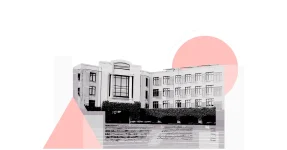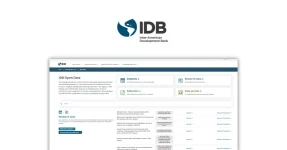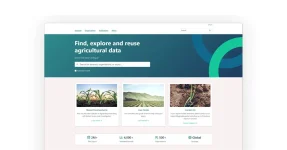Is there a role for open data in helping to inoculate electoral processes from large scale malicious disinformation? And can this be done in such a way that it reinforces and enhances informed debate and political participation, rather than hindering or replacing it?
For Link Digital and its work using data to solve real world problems, this question was prompted by the recent failure of a national referendum to agree to enshrine an Indigenous Voice in Australia’s constitution. While many reasons have been put forward for the result, one factor was certainly the deluge of deliberate disinformation spread amongst the voting public. Many countries have been contending with deliberate, large scale disinformation campaigns waged by malicious actors. But its large scale application in the recent Voice referendum signals a new and disturbing development in the Australian context.
Exactly how widespread was the problem?
An October 22nd open letter distributed by the Indigenous leaders behind the Uluru Statement, the document that originally put forward the Voice proposal, argued that ‘the scale of deliberate disinformation and misinformation [during the referendum] was unprecedented, and it proliferated, unchecked, on social media, repeated in mainstream media’. Well before the official referendum campaign, the Australian Electoral Commission (AEC), the statutory body that oversees Australia’s electoral system, was being tagged in over 100,000 social media posts a week. This included false claims the AEC was trying to rig the referendum by coercing dementia sufferers to vote in favour of the Voice and deliberately throwing out No ballots.1 In response, the AEC undertook what for it was a new strategy of publicly countering public disinformation during the campaign. While certainly worthy, this task was described in one news story as ‘like a man standing with a backyard hose, waving it at an inferno.’2
In a report released in August, the threat analysis division of the American consultancy Recorded Future pointed to the existence of a deliberate effort to manipulate the public to vote against constitutional change. It claimed that most of the manipulative content around the vote was produced by ‘conspiracy theorists, political activists, and ideological groups’ and possibly at least one overseas government actor.3 Reporting by the Guardian Australia online newspaper later highlighted what it claimed was a lack of transparency around some of the interests behind the campaign against constitutional recognition.4
Australia has taken some steps to counter the problem of large scale misinformation campaigns. Since mid-2022 the AEC has chaired an Electoral Integrity Assurance Taskforce. The Taskforce’s website states that ‘threats to electoral integrity can come in the form of cyber or physical security incidents, misinformation or disinformation campaigns, and through perceived or actual interference in electoral processes.’ And the national government recently released an exposure draft of a proposed Communications Legislation Amendment (Combating Misinformation and Disinformation) Bill 2023.
A brief overview of the available literature would appear to indicate that efforts to use open data to counter disinformation in electoral contexts have so far mainly been targeted at less economically developed countries. This is not necessarily because these countries are in any sense less innately democratic than many developed nations, although some do have an existing or previous history of authoritarianism and overt or covert repression that discourages independent monitoring of polls. These efforts are more a recognition that economic and technological restraints, including low digital bandwidth, reduce the ability of some governments to allocate resources to election management and make electoral related data widely and easily available to the public.
Freedom House’s Election Watch for the Digital Age website has an election vulnerability index for several countries – not all of which could be considered economically underdeveloped – that assesses them against criteria mitigating against free and fair elections and the availability of data openly related to electoral processes. These include vulnerability to internet disruptions, blocking of websites, state control of information, laws criminalising online activities, and cyberattacks against civic actors.
The National Democratic Institute’s (NDI) Beyond Transparency: Planning, Attaining and Using Open Election Data in Citizen Election Monitoring initiative has applied open data principles to various stages of the electoral process in Latin America and the Pacific. Influenced by the Third Wave of Open Data, the NDI defines electoral data as open ‘when it is released in a manner that is timely, granular, available for free on the internet, complete and in bulk, analyzable, non-proprietary, non-discriminatory and available to anyone, license-free and permanent.’5 Categories of data include electoral boundaries, voter registration, polling station locations, polling results, political party and candidate registration, and information about election management bodies and where to register a complaint. The NDI provides educational materials and tools based on these open data principles that aim to enable information to be gathered by citizen monitors without physical observation.6 ‘Open election data is comprehensive, external information that can be gathered without physical observation, thereby providing monitors with additional context that can sharpen their analysis and bolster their observation efforts at minimal costs.’7
Developed economies have adopted a range of responses to large scale disinformation, including laws against the deliberate spread of disinformation and countering foreign interference in elections, regulation of social media and online political advertising, and public media literacy campaigns. In the wake of COVID-19 and the war in the Ukraine, the European Union’s attempts in this area have sought to strike a balancing act between what has been referred to as ‘securitization’, ‘which understands the problem as a threat to democracy that legitimizes “exceptional decision-making” from a hard power perspective,’ and ‘self-regulation and voluntarism of digital platforms with a clear orientation towards soft law and minimal intervention.’8
Among the key methods of online content manipulation related to electoral processes, Freedom House identifies propaganda, outright fake news, paid commentators, bots (automated accounts), and the hijacking of real social media accounts.9 And more recently it has highlighted the growing influence of Artificial Intelligence, which it argues threatens to supercharge online disinformation around election campaigns.10
A 2019 report by the Australian Parliament notes that a key challenge in responding to disinformation ‘is the complex, overlapping nature of the problem—which involves issues pertaining to cybersecurity; national security; privacy; electoral integrity; media and advertising standards; transparency; and media literacy. Any effective response will need to account for these various aspects.’11 This points to the importance of much larger shifts in the digital ecosystem – the context within which the majority of disinformation propagates One example is what appears to be a deliberate move on the part of key social media platforms, such as X/Twitter, YouTube, TikTok, and Facebook, away from the stated purpose of sharing accurate news and helping users understand what is going on in the world.12
Discussing the role of journalist fact checkers in the 2022 Philippines national election, a campaign deluged in online disinformation, academic Ma. Diosa Labiste makes a point highly relevant to efforts to counter disinformation more widely: ‘The challenge of battling election-related disinformation is how to hold candidates accountable for the truthfulness of their statements when there are no clear disincentives against disinformation.’13
One project that seeks to use open data to create a space in which truth can be protected and claims made by political interests can be independently verified, is the Transparency International (TI) Integrity Watch Data Hub. This online portal takes publicly available datasets – otherwise often scattered and difficult to access – including asset and income declarations for politicians and high-ranking public officials, political donation and lobby registers, etc, and makes them easily searchable. Part of a longer term TI project, the Hub seeks to provide ‘a one-stop overview’ of harmonised datasets which now covers 15 EU member states, and work is currently underway to expand this to include data from another five nations in the Balkans.
Directly flowing from this project, TI has been working with the Government Transparency Institute and the Organization for Security and Co-Operation in Europe on recommendations for standards regarding open data sets that establish links between private commercial interests and politicians that may influence their statements and voting record.14 While this does not directly relate to deliberate disinformation in an electoral context, as Jon Vruchi, TI’s Thematic Lead on Political Integrity, wrote in a 2019 article: ‘We can only monitor and promote political integrity if we know the private financial interests of our politicians, who has access to political decision-making, and the means through which they gain such access. This is where data comes in.’15 The aim is ‘to identify and reward integrity wherever we see it,’ and vice versa, identify and enable the shaming of corrupt practices.
Another relevant example occurred during the Swiss national elections in October of this year. There is no public funding of political parties in Switzerland and all politics is dependent on private donations. Several organisations used publicly available data to create an easy to use open data portal called Money in Politics Project, which seeks to illuminate the connections between money and Swiss politics. It included data from the Swiss Federal Audit Office that is otherwise difficult to interpret, not cleaned or easily searchable and which by law is withdrawn from public view after five years and placed into Federal Archives.16
In the context of these examples, it is also worth mentioning the Open Knowledge Foundation’s initiative to build Digital Public Infrastructure for Electoral Processes. This aims to create open by design technology that can be reused to make democratic processes more trustworthy, resilient, and transparent in relation to processes such as candidate registration, data on polling stations, and the publications and archiving of results.
Of course, the TI and Swiss initiatives would run into barriers in the Australian context, such as poor data quality. Although improved transparency and real time disclosure of political donations is currently being examined by a national parliamentary inquiry, as things stand, our national political donation laws maintain that political donations below $15,200 do not have to be disclosed until well after the election. But both examples point to the potential value of open data solutions in helping fact-check statements made by politicians and related interests in electoral contexts.
Next Thursday, 23 November, Link Digital Chair Steven De Costa will deliver a keynote at the Canadian Open Data Summit, ‘The Architecture of Trust: Open and Honest Data’. This will follow an Executive Briefing on the 22nd of November, where De Costa will make the case for establishing a ‘Policy to Practice Accelerator Program’. Both sessions are, in part, a response to how our contested information spaces are creating a fundamental challenge for the protection of our civic spaces.
1 Henry Balot, “Indigenous voice: electoral commission launches campaign to combat misinformation and confusion,” The Guardian Australia, April 12, 2023, https://www.theguardian.com/australia-news/2023/apr/12/indigenous-voice-electoral-commission-launches-campaign-to-combat-misinformation-and-confusion
2 Linton Bessor, “The Voice campaign was infected with disinformation: Who’s in charge of inoculating Australians against lies?” Australian Broadcasting Corporation, October 17, 2023, https://www.abc.net.au/news/2023-10-17/voice-referendum-infected-disinformation-australians-lies/102981108
3 Insikt Group, Malign Narratives Oppose “the Voice” Ahead of Australia’s Referendum, (Somerville Massachusetts, Record Future, 2023), page 1, https://www.recordedfuture.com/malign-narratives-oppose-the-voice-ahead-of-australias-referendum
4 See Josh Butler, “Indigenous voice: no campaign’s deep links to conservative Christian politics revealed,” The Guardian Australia, July 13, 2023, https://www.theguardian.com/australia-news/2023/jul/13/indigenous-voice-no-campaigns-deep-links-to-conservative-christian-politics; Ariel Bogle and Sarah Basford Canales, “Revealed: the secretive rightwing firm providing ‘clout’ for voice no campaign,” The Guardian Australia, October 13, 2023, https://www.theguardian.com/australia-news/2023/oct/13/revealed-the-secretive-rightwing-firm-providing-clout-for-voice-no-campaign
5 “Beyond Transparency: planning, attaining, and using Open election data in citizen election monitoring,” National Democratic Institute, October 6, 2021, https://www.ndi.org/publications/beyond-transparency-planning-attaining-and-using-open-election-data-citizen-election
6 Open Election Data Initiative, United States Agency for International Development, National Democratic Institute and Google, accessed November 6, 2023, https://openelectiondata.net/en/guide/electoral-integrity/public-confidence/
7 Julia Brothers, Beyond Transparency: Planning, Attaining, and Using Open Election Data in Citizen Election Monitoring, (Washington D. C, National Democratic Institute, 2021), page 8.
8 Ruth-Marie Henckes, Lucio Posteraro, Tonusree Basu, Helen Turel and Maria Koomen. “Five Ways to Embed Open Gov Values in Online Political Advertising Regulation,” Open Government Partnership, April 14, 2021, https://www.opengovpartnership.org/stories/five-ways-to-embed-open-gov-values-in-online-political-advertising-regulation/
9 Adrian Shahbaz and Allie Funk, Digital Election Interference: Freedom on the Net 2019 Key Finding: Politicians and hyperpartisans use digital means to manipulate elections, Freedom House, accessed November 6, 2023, https://freedomhouse.org/report/freedom-on-the-net/2019/the-crisis-of-social-media/digital-election-interference
10 Freedom on the Net, 2023: The Repressive Power of Artificial Intelligence, (Freedom House, 2023).
11 Luke Buckmaster and Tyson Wils, Social Policy, ‘Responding to Fake News,’ in Briefing Book: Key Issues for the 46th Parliament (Canberra: Department of Parliamentary Services, 2019), 23.
12 Cam Wilson, “Israel-Palestine is the final nail in the coffin — social media can no longer inform us,” Crikey, October 25, 2023, https://www.crikey.com.au/2023/10/25/israel-palestine-social-media-misinformation-propaganda-scams/
13 Ma. Diosa Labiste, “Fact-checking in the Philippines: The Quest to End Disinformation in Elections,” Fulcrum, December 13, 2023, https://fulcrum.sg/fact-checking-in-the-philippines-the-quest-to-end-disinformation-in-elections/
14 Jon Vrushi, “Open Data and Political Integrity: What we learned from a data dive,” Transparency International, October 30, 2019, https://www.transparency.org/en/blog/open-data-and-political-integrity
15 Ibid.
16“About”, Money in Politics, accessed November 6, 2023, https://moneyinpolitics.ch/



